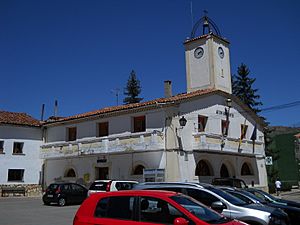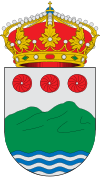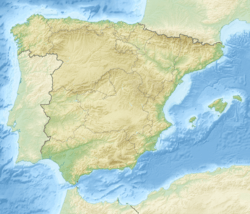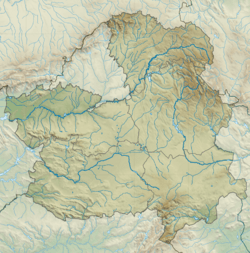Tragacete facts for kids
Quick facts for kids
Tragacete, Spain
|
|||
|---|---|---|---|

Tragacete Local Council
|
|||
|
|||
| Country | |||
| Autonomous community | |||
| Province | |||
| Municipality | Tragacete | ||
| Area | |||
| • Total | 61 km2 (24 sq mi) | ||
| Population
(2018)
|
|||
| • Total | 259 | ||
| • Density | 4.25/km2 (11.00/sq mi) | ||
| Time zone | UTC+1 (CET) | ||
| • Summer (DST) | UTC+2 (CEST) | ||
Tragacete is a small town, also known as a municipality, located in the province of Cuenca. This province is part of the Castile-La Mancha region in Spain. In 2004, a count of the people living there, called a census, showed that Tragacete had 356 residents. By 2018, the population was 259 people.
Contents
Discover Tragacete: A Spanish Municipality
Tragacete is a municipality, which is like a local government area. It is found in the eastern part of Spain. This area is known for its beautiful natural landscapes. The town is nestled within the mountains.
Where is Tragacete Located?
Tragacete is in the Province of Cuenca. This province is in the central-eastern part of Spain. It belongs to the larger region of Castile-La Mancha. The town is situated in a mountainous area.
How Many People Live in Tragacete?
The number of people living in Tragacete has changed over time. In 2004, there were 356 residents. By 2018, the population was recorded as 259 people. This makes it a very small community.
What is a Municipality?
A municipality is a town or city that has its own local government. It can make decisions about local services. These services include things like roads, parks, and public safety. Tragacete is an example of a Spanish municipality.
Geography and Natural Beauty of Tragacete
Tragacete is known for its stunning natural environment. It is located in a region with high mountains and forests. This area is part of the Sistema Ibérico mountain range. The landscape offers many opportunities for outdoor activities.
Exploring the Mountains and Rivers
The town is close to the source of the Júcar River. This river is important for the region. The mountains around Tragacete are covered with pine forests. These forests are home to various plants and animals.
Local Climate and Seasons
Tragacete experiences a continental Mediterranean climate. This means it has cold winters with snow. Summers are generally warm and dry. Spring and autumn offer mild temperatures. This climate supports the local flora and fauna.
History of Tragacete
Like many towns in Spain, Tragacete has a long history. Its past is linked to the broader history of the Cuenca province. Over centuries, different groups have lived in this area. They have shaped its culture and traditions.
Early Settlements and Development
The region around Tragacete has been inhabited since ancient times. People were drawn to its natural resources. The town likely grew as a small farming and forestry community. Its location in the mountains provided some protection.
Tragacete in Modern Times
In recent history, Tragacete has remained a small, quiet town. It focuses on traditional ways of life. Many residents work in agriculture or forestry. Tourism is also becoming important due to its natural beauty.
Culture and Traditions in Tragacete
Tragacete has a rich cultural heritage. The people celebrate local festivals and traditions. These events often involve music, dance, and traditional food. They are a way for the community to come together.
Local Festivals and Celebrations
The town celebrates its patron saints with special events. These festivals usually include religious processions. There are also public gatherings and feasts. Visitors can experience the authentic local culture.
Traditional Cuisine and Local Products
The food in Tragacete reflects the region's traditions. Dishes often use local ingredients. These include game meat, mushrooms, and fresh produce. Traditional recipes are passed down through generations.
Images for kids
See also
 In Spanish: Tragacete para niños
In Spanish: Tragacete para niños








